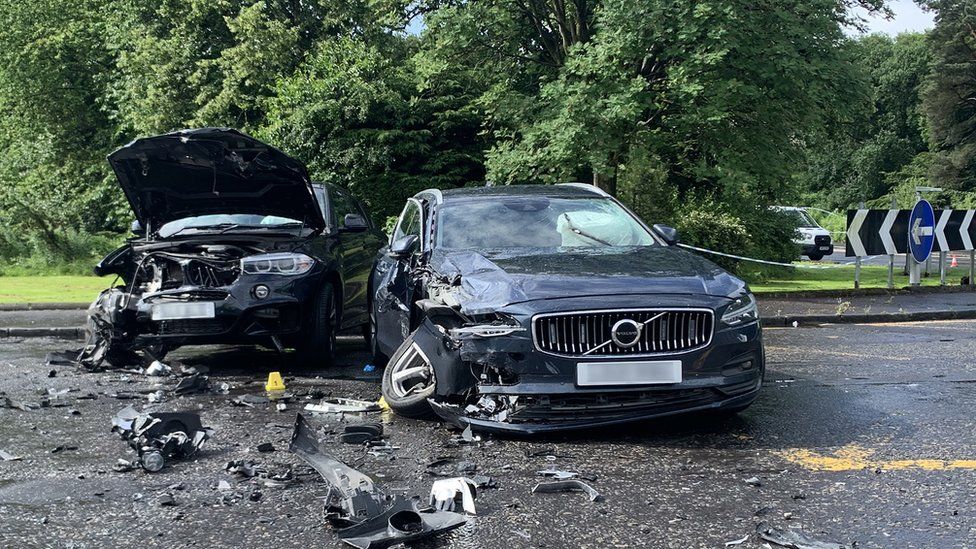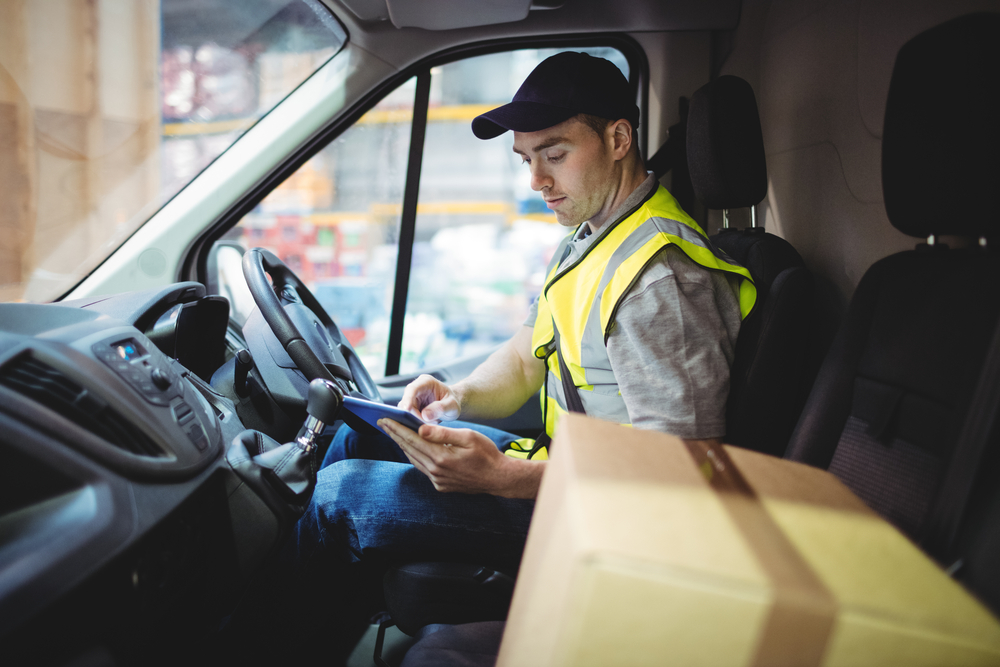Ask any fleet manager about accidents, and they’ll likely tell you that aside from the concerning injuries and potential fatalities, they are a bottomless pit of often-avoidable expenses.
Of course, preventing accidents from happening altogether would be ideal. However, this isn’t always realistic, as human error plays a major role in collisions. It’s estimated that 94% of all accidents are not an accident at all; they are caused by a lapse in judgement, fatigue, loss of concentration, or distraction.
This is where AI dash cams make a major difference in promoting road safety. For years now, road-facing dash cams have played an integral role in monitoring driver behaviour and providing valuable insight into risky habits, such as speeding or late braking. However, inward-facing AI dash cams add an extra layer of protection and enhance safety even further, as the mere presence of a driver-monitoring camera reminds drivers to remain focused on the road and avoid distractions.
Let’s delve into how front- and inward-facing dash cams proactively promote road safety by promoting driver accountability.
How Do Driver-Facing Dash Cams Prevent Road Accidents?
The following features and capabilities of dash cams help to reduce road safety risks:
AI-powered analysis
AI dash cams use smart recognition software to detect specific actions. Much like a smartphone uses facial recognition software to unlock a phone, AI technology is designed to detect abnormalities in driver behaviour. This helps detect risky behaviour and alerts the driver to take action when it occurs.
Examples of detectable risky behaviour include:
– The driver falling asleep.
– Looking at their phone.
– Distracted driving, such as not focusing on the road or removing hands from the steering wheel.
When this behaviour occurs, the dash cam sounds an alert, alerting the driver to their behaviour and helping them to focus. An alert is also sent to the fleet manager to advise them of the driver’s infraction.
By detecting risky behaviour, driver safety and the safety of other road users are enhanced, as the chances of an accident are lowered.
Driver identification
An AI dash cam requires drivers to log in before driving. This helps monitor who drives which fleet vehicle and when. It also helps to pick up patterns and correlations between drivers, vehicles, and shift times. This ensures that drivers do not work too many hours, putting them at risk of falling asleep or making errors due to poor judgement caused by fatigue.
GPS functionality
The GPS functionality of a dash cam allows managers to track fleet vehicles at all times, providing them with the opportunity to act quickly if there’s an incident or the driver is lost. It also geotags events, providing evidence of which vehicle was at the scene of an incident and when. This is particularly helpful for ascertaining which fleet vehicle was at the scene of an incident such as a hit-and-run or reported aggressive driving.
Informed continual training
Dash cam footage provides fleet managers with valuable insights into how drivers are performing, when unsafe driving occurs, and where there are skills or knowledge gaps. This allows for the tailoring of training programs that can coach drivers on how to correct harsh driving, prevent risky behaviour, and cultivate good habits.
Additionally, inward-facing dash cams provide coaching on the job as they alert the driver to their bad behaviours as it happens, allowing for corrective actions to be taken and learnt from.
Holistic view
A dual-facing dash cam provides HD footage and real-time insights, offering fleet managers and role players a comprehensive understanding of driver behaviour, driver safety, and road incidents. It facilitates informed decision-making about fleet drivers’ discipline, training, and the required action in the event of an incident.
Detecting Critical Events and Analysing Driver Behaviour
A dash cam does more than create video footage for fleet safety; it offers insights into driver behaviour and road incidents if they occur. This proactive approach allows fleet managers to assess behaviour, and employ training programmes to prevent road risks and mitigate further risks. It also raises the benchmark for fleet management and safety.
An Example of an AI Dash Cam Promoting Road Safety
Consider the scenario below that exhibits the use of an inward-facing dash cam in preventing road incidents, promoting accountability, and determining liability:
Scenario
A tired truck driver nearing the end of his shift begins to feel distracted but knows he’s being watched, so he focuses on driving. He then decides that listening to music on his phone will help him stay alert, so he uses one hand to unlock his phone and navigate to his music player.
The inward-facing AI dash cam detects the driver isn’t looking at the road, so the in-cab alerts sound. This jolts the driver into remembering he’s being watched and must focus on the road.
As the driver looked up and took the steering wheel with both hands again, he saw the traffic ahead had come to a stop for no apparent reason. He had time to gear down and bring the truck to a standstill only four inches away from the vehicle in front of him.
If not for the AI dash cam’s alert, the driver would not have braked in time and caused a multiple-vehicle pileup. This could have led to multiple injuries or worse, as well as insurance claims and liability cases.
Insights
When the dash cam detected the truck driver looking at his phone, it sent an audible in-cab alert and an instant message to the fleet manager. While it prevented an accident at the time, the fleet manager discussed the incident with the truck driver to get more clarity on his situation.
The driver’s record showed this was his fifth time in the week being distracted while driving, prompting the fleet manager to give him a verbal warning. The fleet manager also used the data from other drivers to see how often the drivers were distracted by their phones and started to think of a proactive solution to mitigate the issue and promote safe driving habits.
AI Dash Cams Provide the Key to Determining Liability
AI dash cams not only help to make the road safer but also play an integral role in reducing the number of liability insurance claims that can occur.
These artificial intelligence-powered cameras offer an unfiltered and objective view of events on the road, capturing details with clarity and precision. In addition, dash cams provide a holistic view of incidents, free from bias.
In legal proceedings, reliable HD evidence from dash cams becomes the backbone of determining liability, offering an impartial perspective that withstands scrutiny and fosters fair outcomes.
AI Dash Cams in Action in Liability Disputes
Consider the scenario below that exhibits the use of dash cam footage in determining accountability and eliminating the chance of false claims:
Scenario
In a liability case involving a collision between a courier van and a car, AI dash cam footage showed the events leading up to the accident. The live video footage from the courier’s driver-facing dash cam showed the driver was focused on the road.
This irrefutable evidence played a crucial role in determining who was liable for the accident, proving that the courier was, in fact, driving responsibly.
Comparing AI Dash Cam Evidence to Traditional Dash Cams
The same scenario could have had a different liability outcome without an AI dash cam, as the driver at fault may have blamed the courier. The brief comparative analysis below explains how:
Objectivity
The courier’s inward-facing dash cam provided unbiased video evidence of the events as they transpired. Without such evidence or with only a forward-facing dash cam, the courier could wrongly have been assumed to be distracted or driving dangerously.
Insights
When the accident occurred, the AI dash cam detected that the driver was looking at the road and was not distracted. Using facial recognition software, it tracked the driver’s eyes and showed that they were alert and focused on the road. The inward-facing footage also showed the driver had both hands on the wheel, revealing that they had full control over the vehicle at the time.
A Safer Future Powered By AI
Undoubtedly, AI dash cams help prevent accidents, promote safe driving, and lower insurance costs for fleets of cars, trucks, vans, and HGVs. They help eliminate human error and bias by their mere presence and in their accounts of incidents.
Specifically, AI-powered dash cams champion safety and accountability in fleets. With real-time incident detection, advanced analytics, and proactive alerts, these dash cams help avoid collisions. They also empower fleet managers to reduce accidents and mitigate risks proactively.
With proactivity and increased accountability, fleets can do their bit to make the roads safer for all.
Crystal Ball’s dash cam technologies and services make driving safer. Talk to our team to learn more about how we can help you prevent road accidents.


